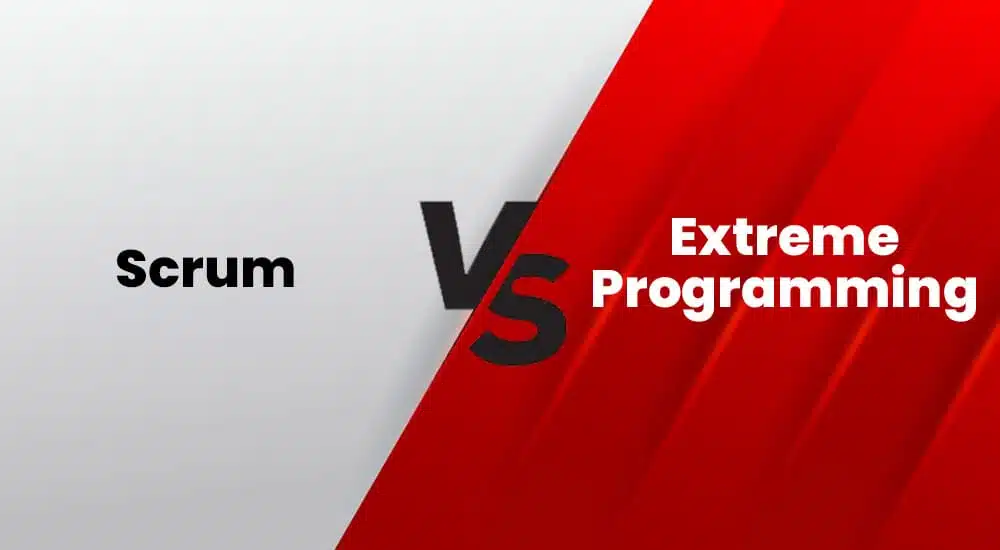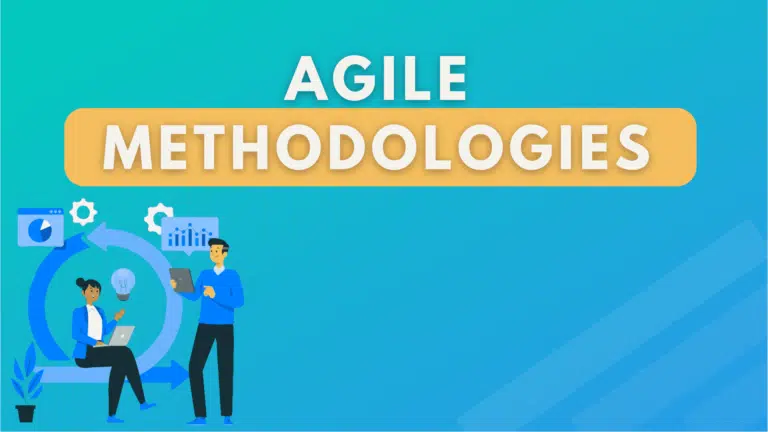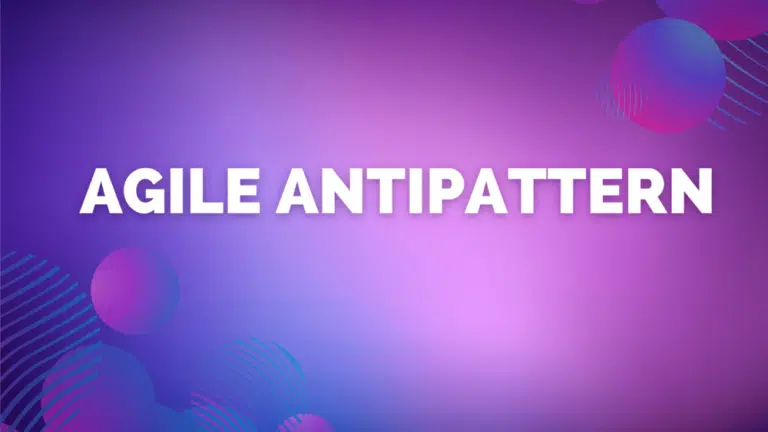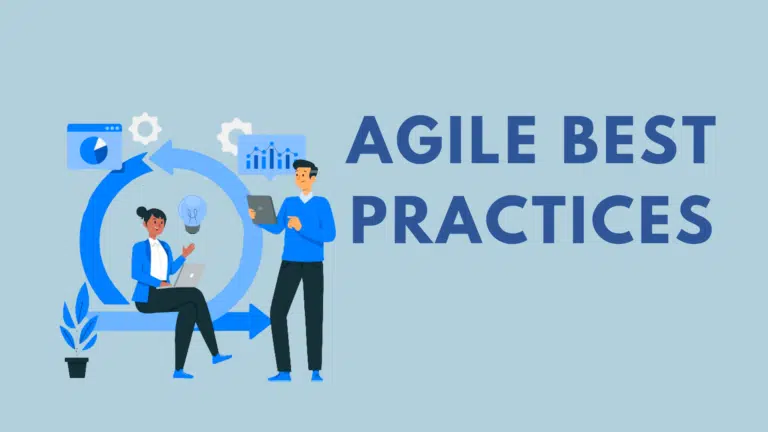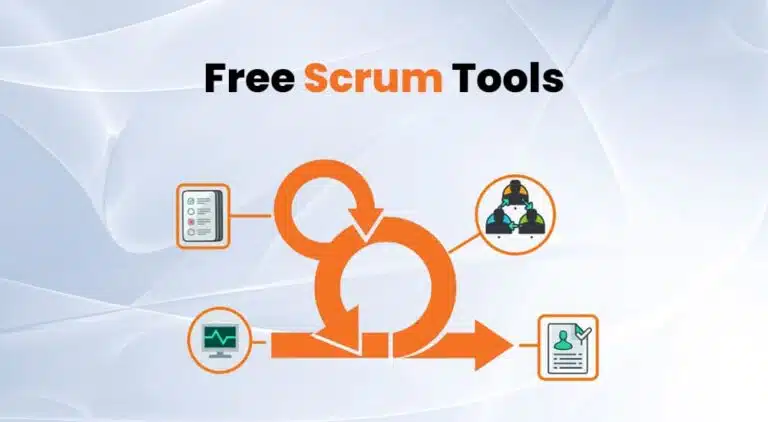Scrum and Extreme Programming (XP) are popular Agile frameworks that project managers use to complete their software or IT projects.
In today’s blog post, we will discuss these two Agile frameworks and their differences.
Let’s get started.
What is Scrum?
Scrum is the most popular Agile framework for software development projects, emphasizing collaboration, flexibility, and customer satisfaction. It provides a structured method to manage projects with undefined requirements.
Scrum teams work in sprints, which are two to four weeks long. At the beginning of each sprint, the team plans the work they will complete. They choose the most important features from the product backlog and estimate how long they will take to complete.
During the sprint, the team works together to deliver the planned work. They meet every morning to review their progress and identify any roadblocks. At the end of the sprint, the team demonstrates the completed work to the Product Owner and other stakeholders. The team then retrospectives the sprint to identify what went well and what can be improved.
Key Scrum roles are:
- Product Owner: They represent the customer and are responsible for defining and prioritizing the product backlog.
- Scrum Master: They ensure that the Scrum process is followed, remove impediments, and facilitate teamwork.
- Development Team: This cross-functional team is responsible for delivering a potentially shippable product at the end of each sprint.
Key Scrum artifacts are:
- Product Backlog: This is a prioritized list of all product features, enhancements, and fixes that must be addressed.
- Sprint Backlog: This is a subset of the product backlog items selected for the current sprint.
- Increment: This is a potentially shippable product increment created during the current sprint.
Key Scrum events are:
- Sprint: This is a time-boxed period (usually 2-4 weeks), in which the project team works on the backlog items.
- Sprint Planning: This is a meeting at the beginning of each sprint, in which the team selects backlog items and plans to achieve the sprint goal.
- Daily Scrum: This is a daily standup meeting in which the team discusses progress, challenges, and daily plans.
- Sprint Review: This is a meeting at the end of the sprint to demonstrate the finished work and gather stakeholder feedback.
- Sprint Retrospective: This is a meeting after the sprint review, in which the team reflects on their process and identifies improvements for the next sprint.
Scrum follows iterative and incremental development that allows teams to quickly respond to changing requirements and deliver value to customers. It encourages transparency, inspection, and adaptation throughout the project life cycle, fostering a collaborative and flexible approach to project management.
What is Extreme Programming (XP)?
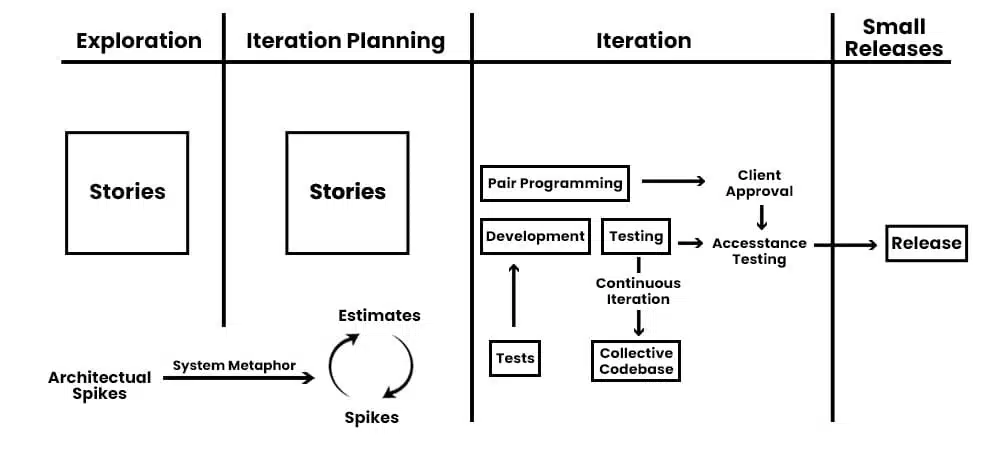
Extreme Programming (XP) is an Agile software development framework that focuses on improving the quality of software and the responsiveness of development teams to changing customer requirements.
XP was developed in the late 1990s by Kent Beck and has since gained popularity as a methodology for small to medium-sized software development projects. It is popular for delivering high-quality software while accommodating changing requirements.
XP is based on four values:
- Communication: XP teams communicate regularly and effectively with all stakeholders. This communication ensures everyone is on the same page and the team is working towards the same goals.
- Collaboration: XP teams work closely to develop software. This collaboration creates a sense of shared ownership and responsibility for the product.
- Feedback: XP teams receive feedback from each other, their customers, and other stakeholders throughout development. This feedback helps identify and correct problems early.
- Simplicity: XP teams strive to keep their code simple. This simplicity makes it easier to maintain and update the code over time.
XP is also based on the following practices:
- Whole Team: The whole team (e.g., developers, testers, customers, and other stakeholders) works together on the project. This helps ensure that everyone’s needs and concerns are considered.
- Planning Game: The team plans the project together using the “Planning Game.” This game helps the team prioritize work and create a realistic schedule.
- Small Releases: The team releases the software in small increments—typically every 2-4 weeks. This helps the team get customer feedback early and make changes as needed.
- Onsite Customer: A customer representative is onsite with the team throughout development. This helps the team understand the customer’s needs and ensure the software meets them.
- Pair Programming: Developers work in pairs on all code. This helps improve the code’s quality and reduce the number of defects.
- Test-Driven Development: Developers conduct tests on the code before writing it. This helps ensure that the code will work as expected.
- Acceptance Testing: Customers are involved in testing the software throughout development. This helps ensure that the software meets their needs.
- Continuous Integration: Developers integrate their code into the main codebase frequently. This helps avoid problems with integration later.
- Refactoring: Developers refactor their code regularly to improve its quality and maintainability.
- Collective Code Ownership: All developers on the team own all the code. This helps create a sense of shared responsibility for the product.
- 40-Hour Week: Developers work a 40-hour per week to avoid burnout and maintain a good work-life balance.
- Slack: Developers have some slack time each week to work on personal projects or learn new things. This helps keep developers motivated and engaged.
What is the Difference Between Scrum and Extreme Programming (XP)?
| Aspect | Scrum | Extreme Programming (XP) |
| Iterations | Organized into fixed-length sprints—typically, 2-4 weeks | Uses short iterations |
| Planning | Sprint planning to select and commit to a set of backlog items | Frequent, informal planning and adaptation |
| Customer Involvement | Sprint reviews and product backlog refinement | Onsite customer or regular customer interaction |
| Testing | Testing integrated into development but not explicitly required | Test-Driven Development (TDD) is a core practice, with unit tests written before code |
| Coding | No specific coding practices are prescribed | Encourages simple design, refactoring, and pair programming |
| Continuous Integration | Encouraged, but not explicit | Frequent integration, often multiple times a day |
| Release Frequency | Regular sprint-based releases | Frequent small releases |
| Changes | Does not allow changes in timeline or guidelines | Allows changes in set timelines |
| Development Priority | The team determines the sequence in which the product will be developed | The team has to follow a strict or predetermined priority order |
| Task Priority | The Scrum Master asks the product owner to prioritize the tasks according to their requirements | The client decides the job priorities and then analyses the releases |
Summary
Both Scrum and Extreme Programming (XP) are Agile frameworks. Scrum framework provides guidelines, but you will need to use other practices with it. XP provides a complete methodology that you can use as-is. Scrum framework focuses on management, while Extreme Programming (XP) focuses on programming, coding, and test-driven methodology.

I am Mohammad Fahad Usmani, B.E. PMP, PMI-RMP. I have been blogging on project management topics since 2011. To date, thousands of professionals have passed the PMP exam using my resources.

